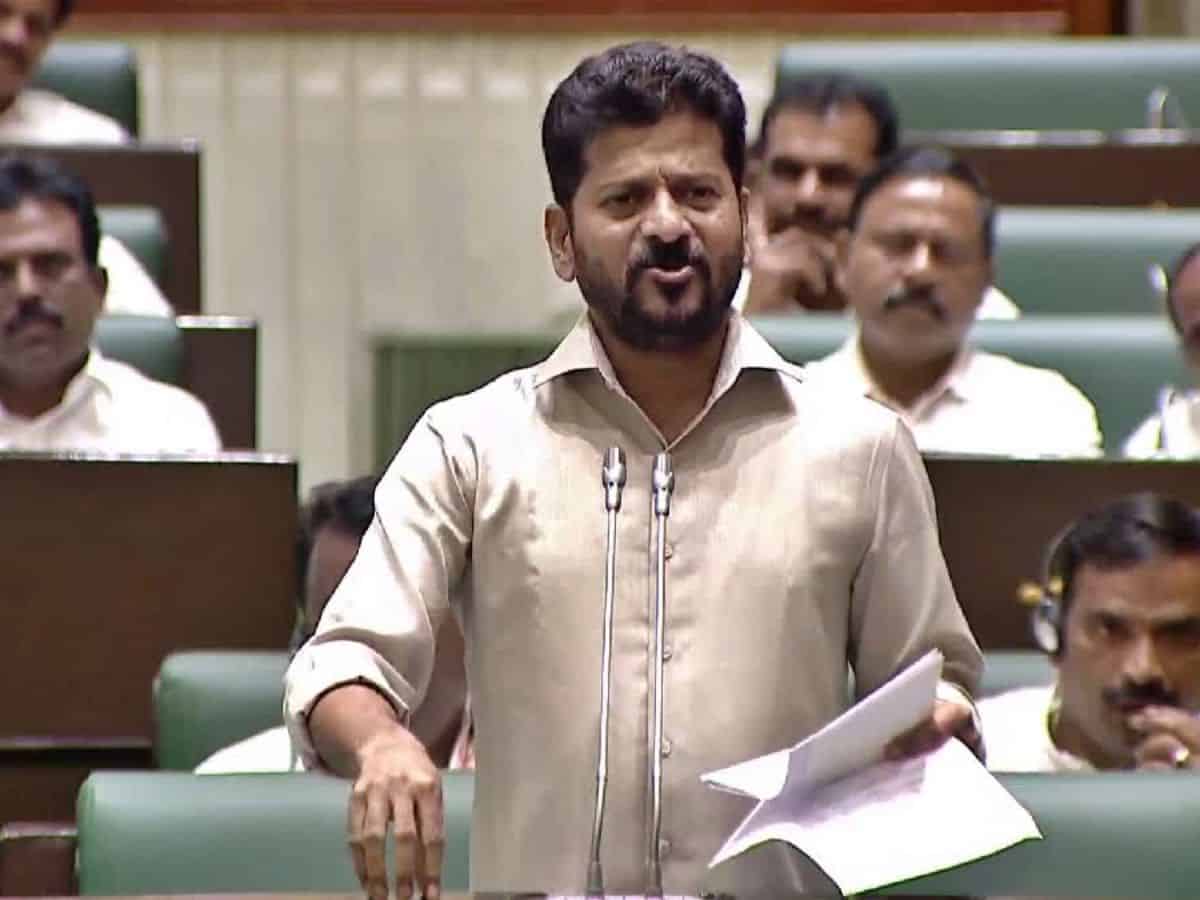
Hyderabad: Whether it was the previous BRS government or the present Congress government, both the chief ministers have praised the Qutb Shahi and the Asaf Jahi dynasties for their vision, and their undeterred commitment to building Hyderabad as a world-class city with the kind of infrastructure which has stood the test of time for over 400 years.
While former chief minister K Chandrashekhar Rao, in his fluent Urdu language used to frequently appreciate the efforts of the two dynasties, the same is being echoed by the present chief minister A Revanth Reddy, as evident in his speech during the short discussion on Hyderabad Disaster Response and Assets Monitoring and Protection (HYDRA) in the Assembly on Friday.
Revanth, perceived as a representative of the rural masses, attempted to shed that image on Friday, when he spoke extensively about the history of Hyderabad, and how both the dynasties, though differing in their policies and ideologies, had built the city from scratch.
Revanth tried to strike a chord with the Old City during the discussion, reminiscing the times when he used to go to Charminar to eat biryani and drink Irani Chai available around the area even at 2 am.
“Quli Qutb Shah had designed everything in the city. The seven generations of the Nizams added Charminar, which has become the symbolic structure of the Hyderabadi culture and heritage. Even today we can find the small-scale industries of bangles, jewellery, textiles, food and beverage, entertainment, and even forex, in various localities around Charminar like the Eidi Bazar, Patherghati, Gulzar House and other places, where the business is thriving,” Revanth said.
He also spoke about the historic structures, areas and institutions built during the reign of the two dynasties like the Golconda, Purana Pul, City College, Judge Khana (Petlaburj Hospital), Aliya Girls School, Niloufer Hospital, Osmania General Hospital, High Court, Osmania University, Osmansagar and Himayathsagar reservoirs, and the underground drainage system which is still the main sewerage system of the city.
“People think that the Qutb Shahis had built only the seven tombs in that area. But 100 historic structures were built in 106 acres of that heritage monument,” he pointed out.
“The Nizams gave us the urban forest in Vikarabad with medicinal plants which is still life-saving. When the time had come, the seventh Nizam respected democracy and gave away his lands for the public use of future generations,” Revanth said.
Also appreciating the efforts of successive governments in developing Hyderabad since the first chief minister of the undivided Andhra Pradesh Burugula Ramakrishna Rao, till Dr YS Rajasekhara Reddy, he said that there was a stark contrast in how the BRS developed the city.
“While those dynasties built the city’s infrastructure to benefit the common people, the BRS government only built the Pragathi Bhavan (now Praja Bhavan) and Dr BR Ambedkar Telangana State Secretariat for their luxurious lives. They not only demolished a historic mosque in the old secretariat’s premises, but also demolished an Ammavaru temple there,” he said, adding “Masjid ko shaheed karoge toh aapki sarkar bhi shaheed hogi.”
In this background, he said that there was a need to meet the growing demands of the ever-increasing population of Hyderabad, and the people coming to the city from various states seeking livelihood and a better life.
HYDRA and Hyderabad
Revealing the intention behind establishing HYDRA, he stressed the need for streamlining the development within the outer-ring road, that would stand for centuries.
“For example, Medchal-Malkajgiri district has villages, 7 municipalities and 3 municipal corporations under its jurisdiction. When we go from Hyderabad towards the villages, on the highway the roads are 100 ft, then the roads become 80 ft in municipal corporations, 40 ft in the municipalities and 20 ft in the villages in the same district. Due to this narrowing-down of the road, there are traffic jams on the roads which have become bottle-necks,” he observed.
Revanth said that even the coordination between the officials of different departments and local bodies was missing, as they have been doing their work under their jurisdiction.
“To bring all these under one system we have proposed HYDRA so that everything could be managed efficiently,” he told the members of the house, apprising them of the intent of establishing HYDRA.
“The water isn’t coming to the city. We are building our houses in the water bodies by occupying the nalas and lakes, building houses and huts. Even the High Court has made serious comments, warning that it will make the officials answerable, also questioning whether any governance was there or not concerning the vanishing lakes. The drainage was designed during the Nizam’s reign to withstand rain of 2 cm per hour. But in certain areas in the city we have been witnessing heavy rains between 9 and 12 cms, whereas in other parts it is sunny,” he explained.
He said that instead of taking steps to address these issues, the previous BRS government in the last ten years, chose to build houses of glass, and made false claims of Hyderabad being developed as a world-class city.
“We need to show a permanent solution. That is why we are establishing HYDRA. Here on, people should be scared of even encroaching the lakes, nalas and the roads,” Revanth declared.
Whether or not the chief minister will stand to his word, is something that the Old City’s populace has been keenly observing. The most urgent among the heritage structures, according to the Old City’s activists, is the restoration of the heritage building of the historic heritage structure of the Osmania General Hospital, which has been yearning to claim back its lost glory due to official neglect for the past several decades, whether it was the BRS, Congress, or the TDP.



